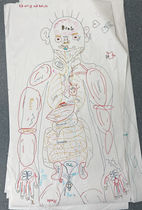Learning Intentions
Understand features of a good conversation.
Success Criteria
-
Watch "How to have a good conversation" by Celeste Headlee.
-
Complete the Consolidation Task provided.
What is communication?
Definition: Communication is when a message is sent by one person and received by another.
What is a good conversation?
A great conversation requires a balance between talking and listening. This balance is important because bad communication leads to bad relationships, at home, at work, everywhere.
How to Have a Good Conversation - Celeste Headlee
Science with Dobrich
Years 7 to 10 Biology
Based on the Victorian Curriculum in Australian - Version 2.0 (update 2026)
Biological Classification
There are similarities and differences within and between groups of organisms living on Earth; the development and use of classification tools, including dichotomous keys, help order and organise human understanding of the diversity of life.
COMING SOON
Cells & their Parts
Cell theory describes cells as the basic units of life; organisms may be unicellular or multicellular and have specialised structures and organelles (including cell walls, cell membranes, cytoplasm, nuclei containing DNA, mitochondria, ribosomes, chloroplasts and vacuoles) that perform specific functions.
COMING SOON
Organ Systems (Animal & Plant)
The structure of cells, tissues and organs in a plant and an animal organ system are related to their function; plant and animal organ systems enable survival of the organism.
COMING SOON
Ecosystem Dynamics
Matter and energy flow through ecosystems and can be represented using models, including food webs and food pyramids; populations will be affected by changing biotic and abiotic factors in an ecosystem including habitat loss, climate change, seasonal migration and introduction or removal of species.
COMING SOON
Reproduction
The structures of reproductive cells and organs in plants and animals are related to their functions; processes of sexual and asexual reproduction enable survival of a species.
COMING SOON
Homeostasis (Nervous & Endocrine Systems)
The nervous and endocrine systems work together to regulate and coordinate the body’s response to stimuli, ensuring homeostasis, including through negative feedback mechanisms.
COMING SOON
Diseases
Infectious and non-infectious diseases are caused by different organisms and agents; measures to control the transmission of infectious diseases include personal hygiene, quarantine protocols, medical treatment and public education programs.
COMING SOON
DNA & Genetics
Genetic inheritance involves the function of DNA, chromosomes, genes and alleles, and the roles of mitosis and meiosis in passing on genetic information to the next generation; the principles of Mendelian inheritance can be used to predict ratios of genotypes and phenotypes in monohybrid crosses involving dominant and recessive traits.
COMING SOON
Evolution
The theory of evolution by natural selection includes the processes of variation, isolation and adaptation and is supported by evidence including the fossil record, biogeography and comparative embryology; the theory explains past and present biodiversity and demonstrates how all organisms have some degree of relatedness to each other.
COMING SOON
How can observing the natural world help us find solutions to human problems?
Students explore the structures and behaviors of plants and animals that protect them from danger or otherwise increase their chance of survival. By performing observations, constructing explanations, and building on prior experiences, students design nature-inspired solutions to a student-identified problem faced by humans.
COMING SOON













